Rita Noumeir
Empowering Clinicians with Medical Decision Transformers: A Framework for Sepsis Treatment
Jul 28, 2024Abstract:Offline reinforcement learning has shown promise for solving tasks in safety-critical settings, such as clinical decision support. Its application, however, has been limited by the lack of interpretability and interactivity for clinicians. To address these challenges, we propose the medical decision transformer (MeDT), a novel and versatile framework based on the goal-conditioned reinforcement learning paradigm for sepsis treatment recommendation. MeDT uses the decision transformer architecture to learn a policy for drug dosage recommendation. During offline training, MeDT utilizes collected treatment trajectories to predict administered treatments for each time step, incorporating known treatment outcomes, target acuity scores, past treatment decisions, and current and past medical states. This analysis enables MeDT to capture complex dependencies among a patient's medical history, treatment decisions, outcomes, and short-term effects on stability. Our proposed conditioning uses acuity scores to address sparse reward issues and to facilitate clinician-model interactions, enhancing decision-making. Following training, MeDT can generate tailored treatment recommendations by conditioning on the desired positive outcome (survival) and user-specified short-term stability improvements. We carry out rigorous experiments on data from the MIMIC-III dataset and use off-policy evaluation to demonstrate that MeDT recommends interventions that outperform or are competitive with existing offline reinforcement learning methods while enabling a more interpretable, personalized and clinician-directed approach.
Label Propagation Techniques for Artifact Detection in Imbalanced Classes using Photoplethysmogram Signals
Aug 16, 2023Abstract:Photoplethysmogram (PPG) signals are widely used in healthcare for monitoring vital signs, but they are susceptible to motion artifacts that can lead to inaccurate interpretations. In this study, the use of label propagation techniques to propagate labels among PPG samples is explored, particularly in imbalanced class scenarios where clean PPG samples are significantly outnumbered by artifact-contaminated samples. With a precision of 91%, a recall of 90% and an F1 score of 90% for the class without artifacts, the results demonstrate its effectiveness in labeling a medical dataset, even when clean samples are rare. For the classification of artifacts our study compares supervised classifiers such as conventional classifiers and neural networks (MLP, Transformers, FCN) with the semi-supervised label propagation algorithm. With a precision of 89%, a recall of 95% and an F1 score of 92%, the KNN supervised model gives good results, but the semi-supervised algorithm performs better in detecting artifacts. The findings suggest that the semi-supervised algorithm label propagation hold promise for artifact detection in PPG signals, which can enhance the reliability of PPG-based health monitoring systems in real-world applications.
A Small-Scale Switch Transformer and NLP-based Model for Clinical Narratives Classification
Mar 22, 2023Abstract:In recent years, Transformer-based models such as the Switch Transformer have achieved remarkable results in natural language processing tasks. However, these models are often too complex and require extensive pre-training, which limits their effectiveness for small clinical text classification tasks with limited data. In this study, we propose a simplified Switch Transformer framework and train it from scratch on a small French clinical text classification dataset at CHU Sainte-Justine hospital. Our results demonstrate that the simplified small-scale Transformer models outperform pre-trained BERT-based models, including DistillBERT, CamemBERT, FlauBERT, and FrALBERT. Additionally, using a mixture of expert mechanisms from the Switch Transformer helps capture diverse patterns; hence, the proposed approach achieves better results than a conventional Transformer with the self-attention mechanism. Finally, our proposed framework achieves an accuracy of 87\%, precision at 87\%, and recall at 85\%, compared to the third-best pre-trained BERT-based model, FlauBERT, which achieved an accuracy of 84\%, precision at 84\%, and recall at 84\%. However, Switch Transformers have limitations, including a generalization gap and sharp minima. We compare it with a multi-layer perceptron neural network for small French clinical narratives classification and show that the latter outperforms all other models.
Adaptation of Autoencoder for Sparsity Reduction From Clinical Notes Representation Learning
Sep 26, 2022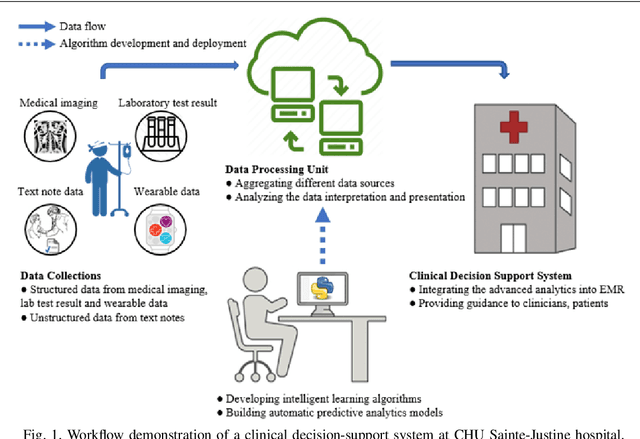
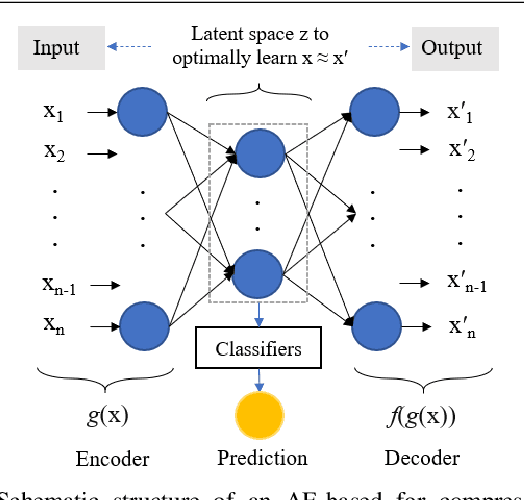
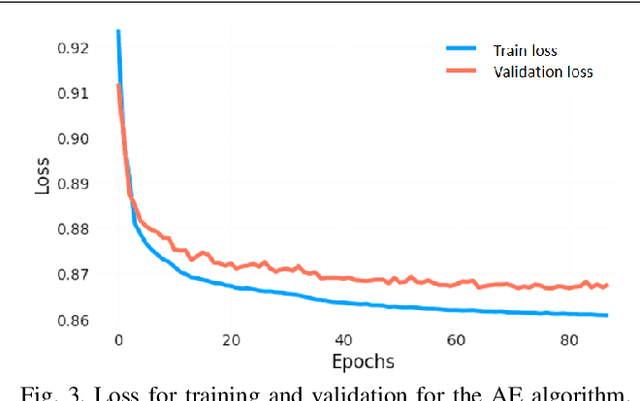
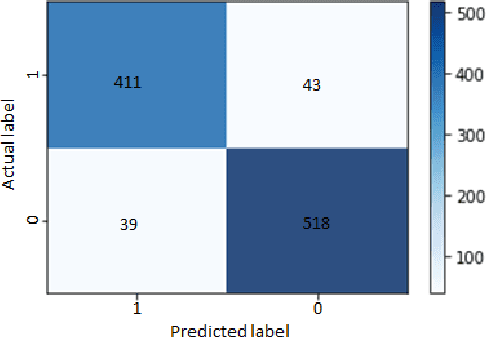
Abstract:When dealing with clinical text classification on a small dataset recent studies have confirmed that a well-tuned multilayer perceptron outperforms other generative classifiers, including deep learning ones. To increase the performance of the neural network classifier, feature selection for the learning representation can effectively be used. However, most feature selection methods only estimate the degree of linear dependency between variables and select the best features based on univariate statistical tests. Furthermore, the sparsity of the feature space involved in the learning representation is ignored. Goal: Our aim is therefore to access an alternative approach to tackle the sparsity by compressing the clinical representation feature space, where limited French clinical notes can also be dealt with effectively. Methods: This study proposed an autoencoder learning algorithm to take advantage of sparsity reduction in clinical note representation. The motivation was to determine how to compress sparse, high-dimensional data by reducing the dimension of the clinical note representation feature space. The classification performance of the classifiers was then evaluated in the trained and compressed feature space. Results: The proposed approach provided overall performance gains of up to 3% for each evaluation. Finally, the classifier achieved a 92% accuracy, 91% recall, 91% precision, and 91% f1-score in detecting the patient's condition. Furthermore, the compression working mechanism and the autoencoder prediction process were demonstrated by applying the theoretic information bottleneck framework.
Detecting of a Patient's Condition From Clinical Narratives Using Natural Language Representation
Apr 19, 2021
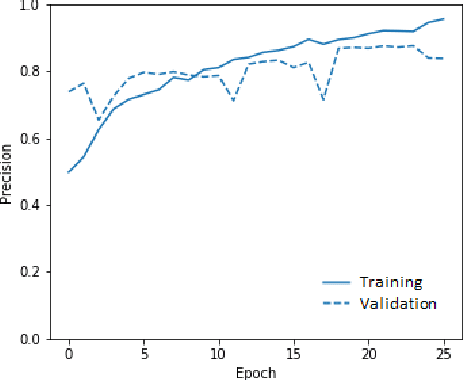
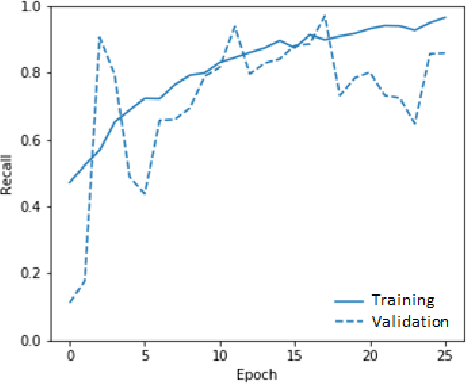
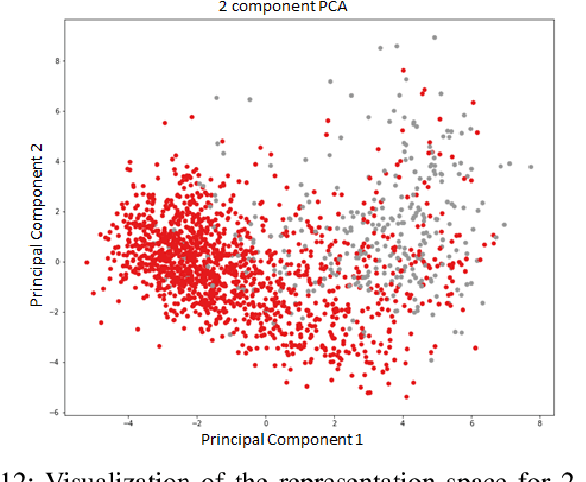
Abstract:This paper proposes a joint clinical natural language representation learning and supervised classification framework based on machine learning for detecting concept labels in clinical narratives at CHU Sainte Justine Hospital (CHUSJ). The novel framework jointly discovers distributional syntactic and latent semantic (representation learning) from contextual clinical narrative inputs and, then, learns the knowledge representation for labeling in the contextual output (supervised classification). First, for having an effective representation learning approach with a small data set, mixing of numeric values and texts. Four different methods are applied to capture the numerical vital sign values. Then, different representation learning approaches are using to discover the rich structure from clinical narrative data. Second, for an automatic encounter with disease prediction, in this case, cardiac failure. The binary classifiers are iteratively trained to learn the knowledge representation of processed data in the preceding steps. The multilayer perceptron neural network outperforms other discriminative and generative classifiers. Consequently, the proposed framework yields an overall classification performance with accuracy, recall, and precision of 89 % and 88 %, 89 %, respectively. Furthermore, a generative autoencoder (AE) learning algorithm is then proposed to leverage the sparsity reduction. Affirmatively, AE algorithm is overperforming other sparsity reduction techniques. And, the classifier performances can successfully achieve up to 91 %, 91%, and 91%, respectively, for accuracy, recall, and precision.
Machine Learning Based on Natural Language Processing to Detect Cardiac Failure in Clinical Narratives
Apr 08, 2021
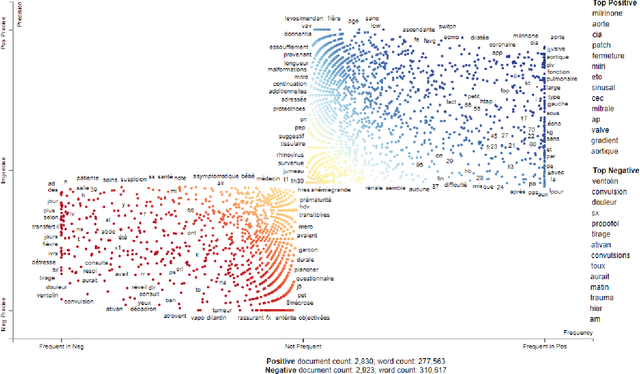


Abstract:The purpose of the study presented herein is to develop a machine learning algorithm based on natural language processing that automatically detects whether a patient has a cardiac failure or a healthy condition by using physician notes in Research Data Warehouse at CHU Sainte Justine Hospital. First, a word representation learning technique was employed by using bag-of-word (BoW), term frequency inverse document frequency (TFIDF), and neural word embeddings (word2vec). Each representation technique aims to retain the words semantic and syntactic analysis in critical care data. It helps to enrich the mutual information for the word representation and leads to an advantage for further appropriate analysis steps. Second, a machine learning classifier was used to detect the patients condition for either cardiac failure or stable patient through the created word representation vector space from the previous step. This machine learning approach is based on a supervised binary classification algorithm, including logistic regression (LR), Gaussian Naive-Bayes (GaussianNB), and multilayer perceptron neural network (MLPNN). Technically, it mainly optimizes the empirical loss during training the classifiers. As a result, an automatic learning algorithm would be accomplished to draw a high classification performance, including accuracy (acc), precision (pre), recall (rec), and F1 score (f1). The results show that the combination of TFIDF and MLPNN always outperformed other combinations with all overall performance. In the case without any feature selection, the proposed framework yielded an overall classification performance with acc, pre, rec, and f1 of 84% and 82%, 85%, and 83%, respectively. Significantly, if the feature selection was well applied, the overall performance would finally improve up to 4% for each evaluation.
Bridging the gap between Human Action Recognition and Online Action Detection
Jan 21, 2021



Abstract:Action recognition, early prediction, and online action detection are complementary disciplines that are often studied independently. Most online action detection networks use a pre-trained feature extractor, which might not be optimal for its new task. We address the task-specific feature extraction with a teacher-student framework between the aforementioned disciplines, and a novel training strategy. Our network, Online Knowledge Distillation Action Detection network (OKDAD), embeds online early prediction and online temporal segment proposal subnetworks in parallel. Low interclass and high intraclass similarity are encouraged during teacher training. Knowledge distillation to the OKDAD network is ensured via layer reuse and cosine similarity between teacher-student feature vectors. Layer reuse and similarity learning significantly improve our baseline which uses a generic feature extractor. We evaluate our framework on infrared videos from two popular datasets, NTU RGB+D (action recognition, early prediction) and PKU MMD (action detection). Unlike previous attempts on those datasets, our student networks perform without any knowledge of the future. Even with this added difficulty, we achieve state-of-the-art results on both datasets. Moreover, our networks use infrared from RGB-D cameras, which we are the first to use for online action detection, to our knowledge.
Infrared and 3D skeleton feature fusion for RGB-D action recognition
Feb 28, 2020



Abstract:A challenge of skeleton-based action recognition is the difficulty to classify actions with similar motions and object-related actions. Visual clues from other streams help in that regard. RGB data are sensible to illumination conditions, thus unusable in the dark. To alleviate this issue and still benefit from a visual stream, we propose a modular network (FUSION) combining skeleton and infrared data. A 2D convolutional neural network (CNN) is used as a pose module to extract features from skeleton data. A 3D CNN is used as an infrared module to extract visual cues from videos. Both feature vectors are then concatenated and exploited conjointly using a multilayer perceptron (MLP). Skeleton data also condition the infrared videos, providing a crop around the performing subjects and thus virtually focusing the attention of the infrared module. Ablation studies show that using pre-trained networks on other large scale datasets as our modules and data augmentation yield considerable improvements on the action classification accuracy. The strong contribution of our cropping strategy is also demonstrated. We evaluate our method on the NTU RGB+D dataset, the largest dataset for human action recognition from depth cameras, and report state-of-the-art performances.
 Add to Chrome
Add to Chrome Add to Firefox
Add to Firefox Add to Edge
Add to Edge